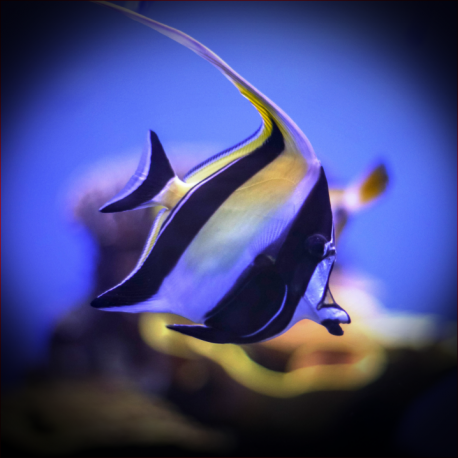More info
Datasheet
| Minimum Tank Size | 1000 litres / 264.17 US gallons |
| Maximum Size | 25.0cm / 9.84inches |
| Reef Compatible | Reef safe with caution |
| Temperament | Docile |
| Temperature | 22.2°C / 71.96°F - 25.6°C / 78.08°F |
| Specific Gravity | 1.020-1.025 |
| Carbonate Hardness | 8-12 |
| pH | 8.1-8.4 |
General Description
The Moorish Idol (Zanclus cornutus) belongs to the Zanclidae family and has a striking appearance with delicate features. These fish can grow up to 25.0cm in size and are found in the East Indian Ocean, West Indian Ocean, Australia, Indonesia, East Pacific, Central/West Pacific regions.
Aquarium Suitability
Moorish Idols are not recommended for beginner aquarists due to their demanding nature. They require specialized food to thrive and are prone to malnutrition if not fed properly. These fish are sensitive to diseases and can be stressed easily, especially during transportation and acclimatization to a new aquarium. They are not reef safe as they may consume zoanthus.
Demands, Care, and Hardiness
Moorish Idols are considered delicate and require extra care and attention. They are docile in temperament but can be selective and slow feeders, necessitating frequent feeding multiple times a day. These fish need a well-established aquarium with ample space for swimming and grazing on algae-covered rocks. They are known to be shy and should not be kept with more aggressive fish.
Reef Suitability
While classified as reef safe with caution, Moorish Idols may pose a threat to certain reef inhabitants like zoanthus due to their diet preferences.
Aquarium Setup
For a Moorish Idol aquarium, a large tank of at least 1000 liters is recommended. The aquarium should provide plenty of swimming space and be well-maintained with rocks and stones covered in algae for the fish to graze on. Supplementing their diet with macroalgae, microalgae like spirulina, and sponges is essential.
Behaviour
Moorish Idols have a docile temperament but can be very selective feeders, eating slowly and requiring a varied diet.
Feeding and Diet
These fish primarily feed on sponges in the wild and need a specialized diet in captivity, including macroalgae, microalgae like spirulina, and sponges. Feeding should be done multiple times a day to ensure their nutritional needs are met.
Habitat and Distribution
In their natural habitat, Moorish Idols can be found in the East Indian Ocean, West Indian Ocean, Australia, Indonesia, East Pacific, and Central/West Pacific regions. They typically inhabit coral reefs and rocky areas abundant in sponges, which form a significant part of their diet.
Dimorphism
Information on dimorphism and captive reproduction for Moorish Idols is not explicitly provided.

